
Selected Projects
-
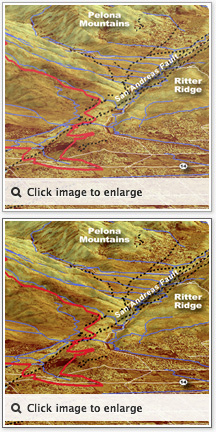
Sustainable Groundwater Supply Analyses
Mojave Desert, California
Performed multi-modal data analysis to establish the reliable groundwater supply available in a sub-basin of the Antelope Valley Adjudication Area. Existing groundwater production wells were instrumented with electronic pressure transducers and flow meters. The data were telemetered to remote offices in Oregon and Minnesota during long term groundwater extraction and utilization. Seasonal variability was recorded along with climatic signals of weather and plant evapotranspiration to enable firm quantification of water resource quantity, quality and sustainability. Testified at the water rights adjudication as to the quantity of water in the sub-basin and its connection to the broader area of adjudication.
-
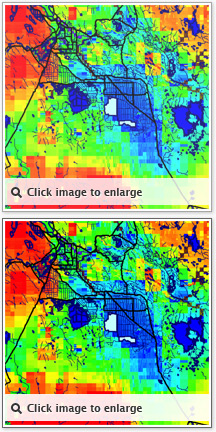
Water Supply Study & Groundwater Model
USF&W Lower Klamath National Wildlife Refuge,
Klamath Basin of Oregon and CaliforniaDeveloped an overall water budget for the Tule Lake sub-basin of the Upper Klamath Basin on behalf of the U.S. Fish & Wildlife Service (USF&W) with recommendations for additional groundwater supply to augment seasonal wetlands. Built and calibrated a 3,600 square mile groundwater model of the entire Tule Lake sub-basin using MODFLOW. Calibration was done using inverse parameter fitting via PEST to match spring flows and measured elevations over the historice record. Evaluated the feasibility of long-term groundwater supply to augment seasonal wetlands in the USF&W Refuges. Work was done cooperatively with the U.S. Geological Survey and water resource agencies from Oregon and California on water demands in the area, irrigated acreage, hydrogeology, and groundwater elevations. Developed novel method for calculating net recharge from rainfall in a closed basin using published watershed techniques.
-
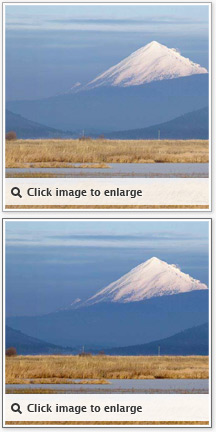
Spring Source Evaluation
Shasta City, California
Investigated multiple locations for borehole interception of spring water flowing from basalt and andesite bedrock formations. Study involved installation of a number of shallow and deep wells to map fracture and structure patterns to geology that produced springs and then to determine areas that were supplying flow to springs. Drilled spring borehole on property over 500 feet from spring emergence and established adjacency under California Department of Health Services spring water criteria. Performed dye tracer studies, stable isotope evaluations of water provenance, and withdrawal tests on sustainable borehole/spring yield.
-
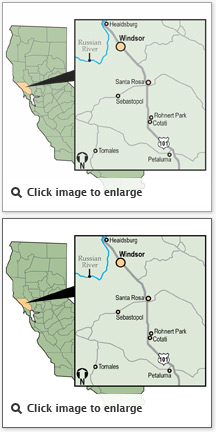
Water Supply Master Plan
Town of Windsor, California
In partnership with RMC Water and Environment, developed a staged approach to supplemental groundwater supply wells for Town of Windsor’s Water Master Plan. The work was done in cooperation with the USGS and other participating water supply agencies in the area such as Sonoma County Water Agency. The hydrogeology of the area surrounding the town was evaluated along with the engineering analysis of locations of greatest need in the water distribution system to develop recommended locations for well siting and an approach to staged evaluation of aquifer storage & recovery (ASR) of water.
-
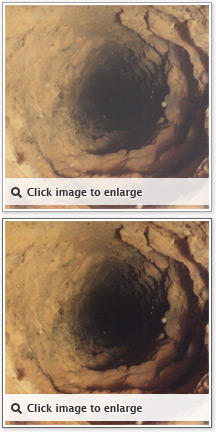
Water-Supply Well Design and Installation
Town of Windsor, California
Designed three 1,000-foot deep boreholes for municipal water-supply wells and designed the wells themselves. Developed contract specifications and assisted in bidding process including site inspection, bid review, and contractor selection. Borehole specifications include advanced geophysical methods (magnetic resonance for relative water production capacity by interval) as well as conventional (e.g. electrical resistivity). Drilling methods specified enabled real-time evaluation of sedimentary units and collection of water-quality sample from productive intervals to assess arsenic, manganese and other chemicals of concern. E-PUR oversaw drilling and well installation. During borehole installation additional stable isotope water samples were collected for hydrogen, oxygen, and sulfur analysis to assess genesis of groundwater and potential issues with aquifer storage and recovery (ASR). Two water-supply wells were designed with multiple perforated intervals for production testing. Dynamic well flow contribution and water-quality testing was done using USGS patented methods on two existing supply wells to evaluate arsenic producing intervals and potential subsurface mitigation measures.
-
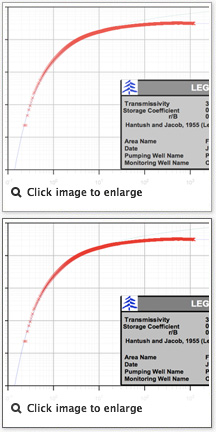
Water Supply Aquifer Test Analyses
Faribault, Northfield, and Janesville, Minnesota
In partnership with Summit Envirosolutions, evaluated large long term aquifer tests to support water rights applications to Minnesota Dept. of Natural Resources for industrial uses. Tests involved monitoring of numerous nearby domestic and municipal water supply wells using realtime processing of groundwater elevation data from pressure transducers in the operating wellfields to evaluate local and background water level influences. Extraction rates ranged from 1,000 to 2,000 gpm over periods of 2 weeks or more. Hydraulic parameters for the bedrock aquifers were estimated along with estimates of projected drawdown and capture area for planned long term operation.
-
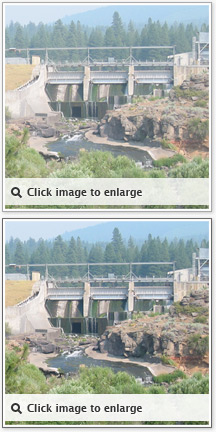
Klamath River Dam Removal Evaluations
Siskiyou County, California
E-PUR reviewed state and federal sediment testing for the estimated 20 million cubic yards of sediment in the reservoir impoundments behind the four lower dams currently scheduled for removal. The project team evaluated sediment transport issues after dam removal including sediment quality and data collection. Sediment testing for heavy metals, dioxins, wood treating chemicals, and other semi-volatile and volatile organic chemicals are being done to a Sediment Evaluation Framework (SEF) derived from the Dredged Material Management Program for the Puget Sound prepared by the U.S. Army Corps of Engineers and the Puget Sound Dredged Disposal Analysis (PSDDA). Work is on-going.
-
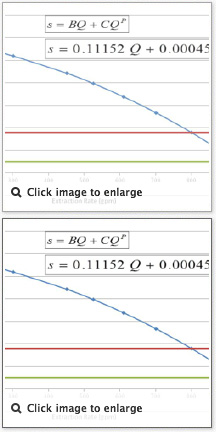
Whitman College Well-Pump Design Supply
Walla Walla, Washington
Whitman College needed additional water from their existing 900-foot-deep well for irrigation and building cooling water. E-PUR evaluated the hydrogeology of the regional basalt bedrock aquifer to assess which intervals were capable of yielding significant flow to meet peak summer demand. Well step-drawdown test data for an existing supply well and pump were analyzed using FASTEP code to identify precisely, the non-linear well-loss (CQP, above). Well pump design on the vertical-line-shaft turbine well pump was then done to match the well curve (blue line) with the pump efficiency curve. Lowering the pump intake ~70 feet in the well to 440 feet enabled peak flow demands to be met. The project was completed in a matter of months to enable Whitman College to discontinue purchase of municipal water to meet these water supply needs.
-
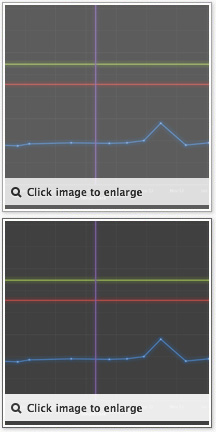
Evaluation of Baseline Groundwater Quality
for Municipal Water-Supply WellsGearhart, Oregon
E-PUR staff compiled several years of groundwater elevation and groundwater quality data collected from production wells, monitoring wells, and surface water monitoring stations into a secure cloud-hosted GIA database. The database of both electronic and manually collected data was constructed to comply with regulatory data submission standards, and to allow for rapid data analysis. E-PUR staff analyzed background water quality conditions for two periods, prior to activation of the production wells, and after wellfield startup. Using novel statistical methods, staff worked with regulatory officials to establish groundwater quality concentration levels that allowed for the safe operation of the City of Gearhart’s well field within its water rights permit, and also to protect the well field from saltwater intrusion of from the nearby Pacific Ocean.
-
Analysis of Shallow Aquifer and Water Supply
Aquifer Groundwater QualityOrange County, California
E-PUR analyzed groundwater quality and elevation data over a ten year period among a network of ~750 monitoring points. E-PUR developed a method of evaluating background nitrate and perchlorate concentrations from groundwater recharge off the Santa Ana River to identify water quality impacted areas. Data were mapped using geospatial techniques for multiple events to obtain overall best fit, effectively identifying the aquifer characteristics while analyzing flow directions. Analyzed infiltration data from percolation ponds and weired segments of the Santa Ana River utilized by OCWD for managed aquifer recharge and monthly production rates from regional contract water suppliers using web-hosted data analytics.
Project produced a three-dimensional analysis of groundwater chemistry throughout the basin. Root causes of impacts to municipal water-supply wells were assessed and mitigation measures proposed successfully. Client site control of chemicals was implemented to avoid liability in the broader actions being contemplated by Orange County Water District.
-

Evaluation of Cost Allocation for Groundwater
Remediation and Expert Witness TestimonyE-PUR evaluated regional groundwater quality data collected from production wells, monitoring wells. The location and distribution of chemicals in groundwater were evaluated with respect to the drinking water standards (MCLs). Those areas where shallow groundwater exceeded the MCL for a chemical, eight (8) chemicals in total, were assessed for the components for groundwater remediation by a proposed extraction and treatment remedy. Differing portions of the extraction, piping, and water treatment processes were evaluated as the necessary components for a stand-alone remedy for that chemical. E-PUR developed cost estimates for the prospective remedial systems using Association for the Advancement of Cost Engineering (AACE) guidance. These cost estimates were utilized to develop proportionate shares of allocable total costs for each chemical. Trial testimony was provided in 2012; in Phase 1 rulings the court found plaintiff was responsible for their contributions of chemicals and their portion of their remedial costs using Stand-Alone Cost theory for allocation and the concept of divisible responsibility.